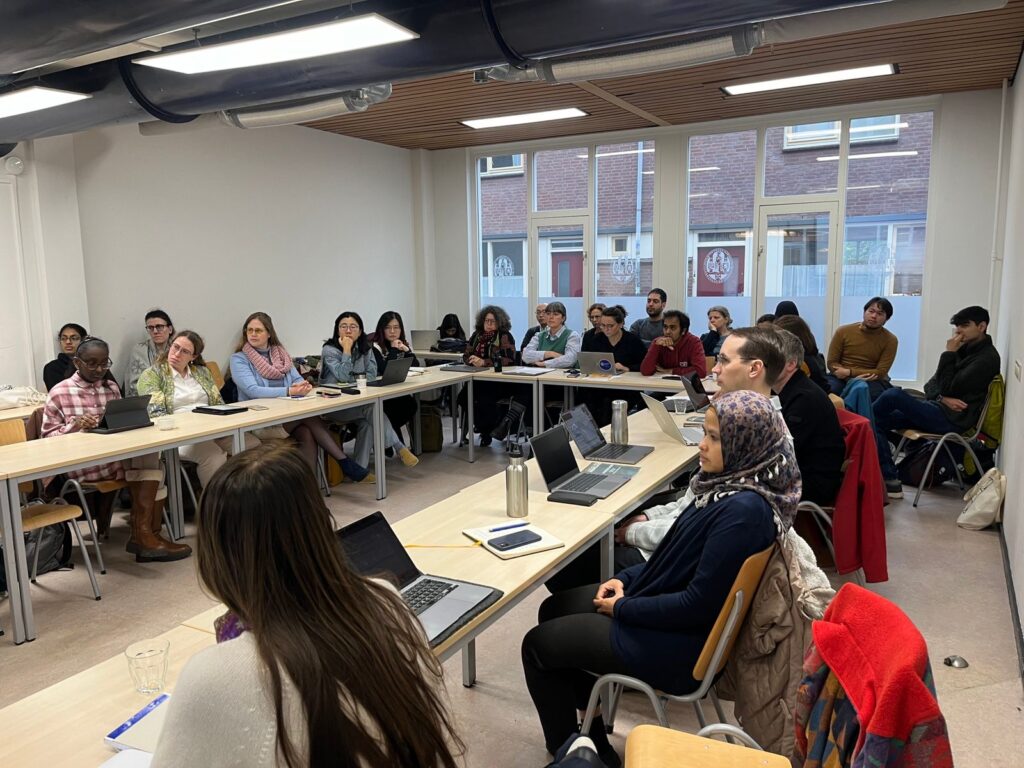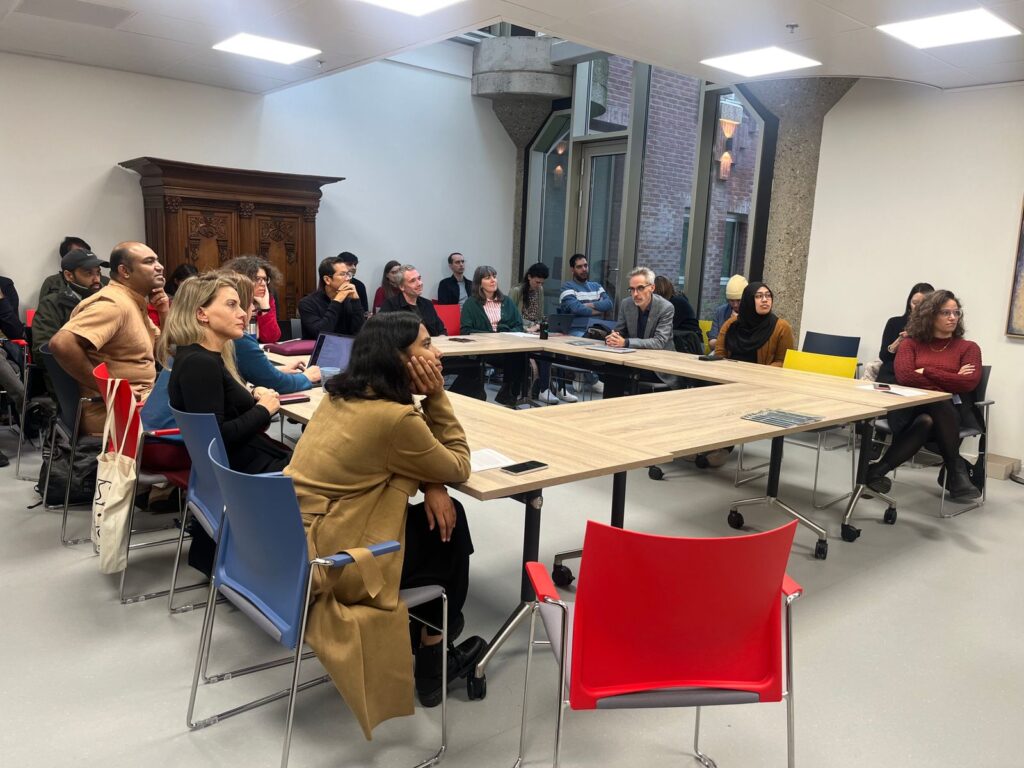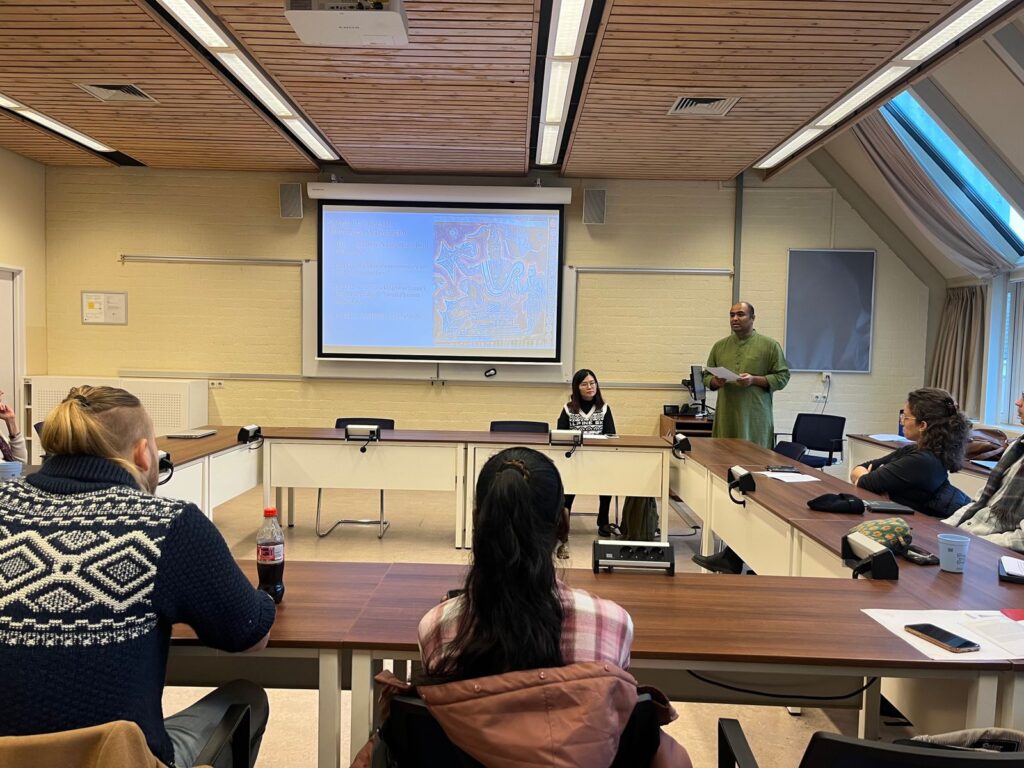Visualizing Ancient Histories – Today’s Conversations
by Sanne Dokter-Mersch
Published on December 3, 2024
On Thursday, November 14, 2024, and Friday, November 15, 2024, members of the PURANA team organized the Visualizing Ancient Histories symposium at Leiden University. We welcomed speakers from around the globe for a truly fascinating conference. Elizabeth Cecil started her presentation by saying that she wanted to start the conversation at the river Mekong. And a conversation it surely was. During the entire symposium, from the early morning sessions to the late afternoon sessions, there were lively discussions and efforts were made to make connections between the papers presented. The text of this blog was part of the Closing Discussion of the symposium. If you are interested in reading the abstracts of the papers discussed below, please contact the organizers (a.kotler@hum.leidenuniv.nl or s.mersch@hum.leidenuniv.nl).
Our invitation to the speakers included our initial aim of the symposium: to examine how visual media shapes the understanding of the past and its relationship to the present, as well as the ways in which different forms of media have been used to craft authoritative visions of the ancient past in both premodern and contemporary South and Southeast Asia. We invited speakers related to three topics.

The first topic was “Material Media”. We raised questions such as how have material objects been used to create, narrate, and interpret history, and by whom? How are artefacts leveraged and politicized as cultural heritage? What role do museums play in negotiating the relationship between past and present?
Many of the speakers contributed to this topic. Vera Lazarreti showed us how the repatriation of the statue of Annapoorna to Vārāṇasī became a flagship of the nationalist political party. Annapoorna’s story was used with political aims. Politics also played a big role in Verena Meyer’s talk, though with different conclusions. The home village of Mangdir, for example, became rather the home of an eclectic community of Muslims and non-Muslims, despite state’s efforts.
Vera Lazarreti’s presentation also linked with two other papers. Where she made a plea to take into account the afterlife of returned artefacts, this was beautifully illustrated by both Alicia Schrikker and Roshan Mishra: Schrikker by concluding that the cannon and weapons “felt at home” in the museum in Colombo, and Mishra arguing for the active use of the deities with deterioration as a possible, but acceptable result. The narratives of material cultures thus still continue to this very day.
This is all the more the case with Elizabeth Cecil’s research and Marijke Klokke’s topic at this symposium. In the case of Cecil’s work, the centuries-old natural temples are still active places of worship, and they are natural places where we can not only see the gods, such as Śiva in the form of a mountain, but even hear them, such as Gaṅgā through her roaring during the rainy season. The narrative of the descent of the Gaṅgā in a mythic past becomes multi-sensorial in present-day Southeast Asia. The narrative studied by Klokke, the age-old story of the churning of the ocean, has proven to stand the test of time. It was perhaps the most concrete example of a visualization of not only narrative, but also of history. By showing the absence of the devāsura war in the Bayon temple, Klokke hypothesized on the possible representation of the historical situation of the contemporary ruler Jayavarman VII.
Finally, Arya Adityan showed how narratives can be reflected in text and image. In the case of Varāha, the Boar manifestation of Viṣṇu, there is not a clear one on one relation, but it is stimulating to try understand the differences and to peel off layers in both media.

The second topic of the symposium was “Manuscript and Image”. Lennart Bes illustrated how texts can help us understand the type of clothing in South Indian courts. If the images are confusing, the texts can help in understanding the history. Text and image are of course the ideal place to narrate history. The visualization of the past in images in texts has given Forough Sajadi a uniquely illustrated manuscript with a unique picture of Zoroaster. By finding this manuscript, the narrative continues in her research. The interesting absent figure in Ayelet Kotler’s images is Vyāsa himself. Instead, we find Anandghan Khwush depicted in mythical times as an eye-witness to the mythical events in the faraway past. Mythical time was also very much present in Joel Bordeaux’s paper. We saw a number of images representing Purāṇic stories in the Bengali Kāśīkhaṇḍa, but the absence of visualization of stories was also there: the romantic elements of the Bengali Purāṇa were carefully eliminated. I am sure that in this absence there is a whole new research narrative to create.
The final topic was “Performance Traditions”, with questions such as how are religious and political histories of South and Southeast Asia expressed, remembered, and transformed through performance traditions such as film, dance, music, or ritual? How does performance create a space for the retelling and interpretation of classical narratives?
One of the speakers in this panel was Naresh Keerthi. His presentation not only fitted the topic of performance traditions, as it dealt with singing and how song became musicology in, in particular South India, his talk was in essence a history of song with Naresh himself being the author of this history. Saran Suebsantiwongse’s talk surprisingly brought together a number of traditions and narratives in the fascinating ritual of the swing. The churning of the ocean, as well as Śiva as Nāṭarāja – it all comes together in a rich ritual that due to its risks is perhaps not surprisingly not performed anymore. Ritual was also the topic of Elena Mucciarelli’s paper. She showed the interconnectedness of the Tirunilalmāla between the mythic narrative of Kṛṣṇa who needs to get rid of sins and a detailed description of a ritual that can serve as a ritual instrument. The ritual text becomes the ritual itself.
To conclude, it was wonderful to combine the academic presentations with a display of contemporary art, with Samboleap Tol presenting her works of art. She explained that she uses her own history, her own narratives to create art – or rather, how art is able to give voice to her history and that of her community.

